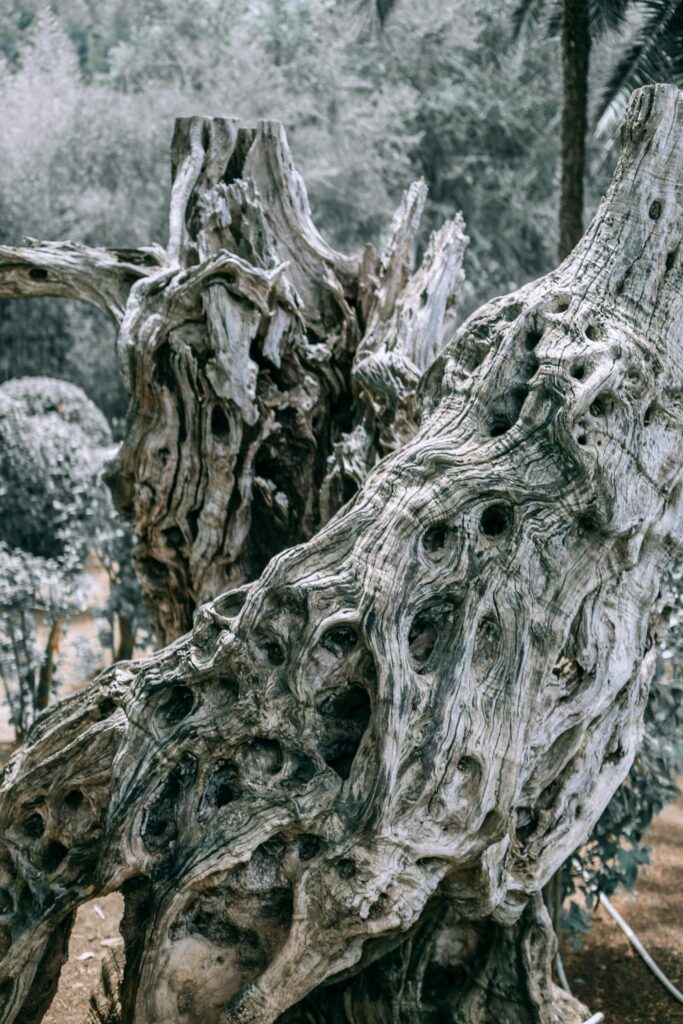Common Tree Diseases in Kansas City and How to Prevent Them

Common Tree Diseases in Kansas City and How to Prevent Them
Pine trees in Kansas City can be susceptible to a variety of diseases. If left untreated, they can become a safety hazard and a burden to property owners.
Tip Blight is caused by a fungal disease that primarily affects Austrian and Scotch Pine. Repeated infections can lead to severe decline or death. Fungicide sprays of thiophanate-methyl, mancozeb or Bordeaux mixture at 7-10 day intervals during the spring will control this disease.
Emerald Ash Borer
If you reside in an area where the invasive emerald ash borer (EAB) has been detected, it is crucial to be vigilant for symptoms indicative of infestation. Look for signs such as slender, bare branches with sprouting buds near the base, a thinning crown, water-soaked bark, or distinctive D-shaped holes. Woodpecker damage and twig death are additional red flags. In such regions, considering treatment for your ash trees with a systemic insecticide is advisable, and a certified arborist can recommend a suitable approach tailored to your specific situation.
For overall tree health, regardless of EAB concerns, practicing good arboricultural habits is essential. Avoiding trunk wounds and ensuring proper pruning, mulching, and watering are effective measures to reduce disease risks. Early detection of severe diseases is crucial, such as those causing rapid dieback (blight) or distinct bark lesions known as cankers. Keep an eye out for fungi-related issues like Diplodia tip blight in pines, fire blight in rosaceous plants, and Cytospora canker in poplars. Applying fungicides like thiophanate-methyl, mancozeb, or chlorothalonil at green tip or just before leaf out can effectively control these diseases.
Residents in regions like Kansas City, MO, should especially prioritize the health of their trees. Seeking guidance from a trusted Kansas City, MO tree service can provide valuable insights and assistance in maintaining the well-being of your trees.
Rust & Scab
Rust and scab are fungal diseases that can appear differently depending on what trees you have in your yard. Cedar Apple Rust (CAR) on junipers and Eastern red cedar windbreaks looks like spiky galls that sprout orange gelatinous tendrils in spring that infect apple and crabapple trees. The disease causes olive to greenish-black spots on leaves and fruits with heavily infected fruit becoming misshapen.
Scab is found on a variety of trees including pines, spruces and some deciduous species. Scab infected tree needles are brown to dark brown, with scabby blisters and dead branches.
Fungicides can be used to prevent rust and scab. For spruces and pines, fungicide treatments should be applied on a 14-21 day cycle beginning when new shoots begin to grow in the spring. We recommend the use of fungicides with high disease resistance or moderate scab susceptibility when growing these species in your landscape. Proper spacing and weed control will promote good air circulation and decrease the chances of infection.
Dutch Elm Disease
Dutch elm disease (DED) is a deadly fungus that killed 10 – 40% of the European elm population in the 1910s. The fungus is spread by the native American and European elm bark beetles that breed in dead or dying elm trees or logs. The beetles then carry spores to healthy elms where they infect them while feeding.
DED symptoms include wilting, curling and yellowing of leaves in the upper crown. Trees that have DED die within 1-2 years. To prevent the spread of DED, NDSU recommends limiting the number of elms on your property, inspecting them regularly for signs of disease and removing symptomatic elms immediately.
Other elms such as slippery elm, rock elm, September elm and white cedar can be used to replace elms in urban areas as they are less susceptible to DED. Proper cultural care including proper pruning and fertilization can help prevent disease. During the summer, trees should be watered adequately to maintain vigor.
Oak Wilt
Oak wilt (Ceratocystis fagacearum) is a fungal disease that impacts the vascular tissues of oak trees. The fungus is carried by sap beetles that feed on fresh wounds caused by pruning cuts, storm damage or other injury. Once the beetles carry the spores into the vascular tissue, the tree begins to ooze a sticky liquid that resembles sour sap and prevents healing, leading to branch dieback.
Symptoms appear in late spring and early summer. Leaves of affected red oaks turn olive drab or light tan to bronze starting in the leaf margins and progressing toward the leaf base. The discoloration resembles annual fall color changes and is distinct from green healthy tissue. Red oaks may defoliate within weeks of infection and die shortly thereafter. White oaks are more resistant and may survive a few years after infection.
The best way to stop the above ground spread of oak wilt is to install a barrier line. If this is not possible, it is crucial to first sever root grafts and then remove infected trees. Properly handling diseased wood before April will also help delay the underground movement of the fungus to uninfected oaks.